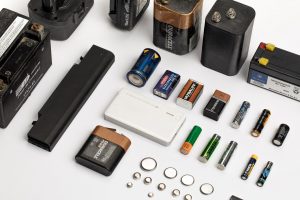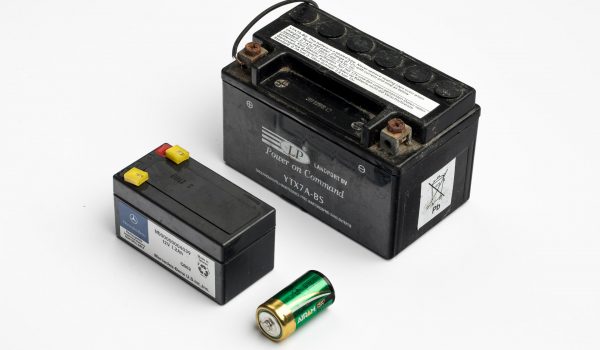Recser Oy’s internal classification
Recser Oy has further assigned batteries separate sub-classes based on their weight. In practice, the producer responsibility for all batteries that are under 25 kilos in weight can be handled through Recser Oy, regardless of their intended purpose.
The producer responsibility for large industrial batteries weighing over 25 kilograms can be fully transferred to Recser Oy starting from August 18, 2025. Until then, you can register as a producer and fulfill the statutory reporting obligations to the authorities through us.
You can take care of your producer responsibility fully or in part through Recser Oy for the following batteries:
- Portable batteries

A portable battery refers to a battery or battery unit that is sealed, can be carried manually and is not an industrial or automotive battery. (Government Decree 520/2014, section 2, subsection 1, paragraph 4). Examples of portable batteries include AA and AAA batteries and the batteries used in mobile phones, laptops, toys, cordless tools and electric toothbrushes.
- Portable industrial batteries

A portable industrial battery refers to an industrial battery, within the meaning of the Government Decree on batteries (Government Decree 520/2014, section 2, subsection 1, paragraph 7), the size of which allows for easy manual carrying. Portable industrial batteries include those designed exclusively for industrial and professional use, as well as batteries sold to consumers. Examples of portable industrial batteries include batteries used in electric means of transport, such as electric bicycles, electric scooters and self-balancing unicycles (excluding traction batteries of electric motorbikes), as well as batteries under 25 kilos in weight used to store energy and for leisure purposes.
- Portable lithium automotive batteries

A portable lithium automotive battery refers to a lithium-based automotive battery, within the meaning of the Government Decree on batteries (Government Decree 520/2014, section 2, subsection 1, paragraph 6), that is sealed and the size of which allows for easy manual carrying. Automotive batteries include those used for automotive starter, lighting or ignition power. Examples of portable lithium automotive batteries include the starter batteries of mopeds, motorcycles, cars, ATVs, scooters and ride-on lawn mowers.
You can take care of your producer responsibility in part through Recser Oy for the following batteries:
- Large industrial batteries

A large industrial battery refers to a battery that weighs over 25 kilos and is exclusively designed for industrial and professional use, within the meaning of the Government Decree on batteries (Government Decree 520/2014, section 2, subsection 1, paragraph 7), the size of which does not allow for easy manual carrying. In this context, large industrial batteries do not refer to the batteries of electric vehicles, such as electric and hybrid cars, in which the battery is integrated into the device and not intended for the end user to remove at any point. Examples of large industrial batteries include, but are not limited to batteries used for emergency or back-up power in hospitals, airports or offices, batteries used in trains and aircraft, forklift batteries and batteries used on oil rigs at sea and in lighthouses. You can read more from here.
Additionally, the following battery types have their own producer organisations:
- Lead-based automotive batteries
Lead-based automotive batteries are batteries used for automotive starter, lighting or ignition power. The automotive lead-acid battery producer organisation Akkukierrätys Pb takes care of recycling these products on behalf of producers. You can handle your producer responsibility for lead-acid vehicle batteries through an agency agreement between Recser and Akkukierrätys Pb. Recser will transfer the recycling fees for industrial and vehicle lead-acid batteries and submit the related information to Akkukierrätys Pb.
- Traction batteries of electric cars
Traction batteries of electric cars refer to the energy reserve needed for operating an electric or hybrid vehicle, including cars, vans, trucks and buses. Traction batteries also include auxiliary batteries, meaning the energy reserve needed for operating the auxiliaries of electric or hybrid vehicles. Finnish Car Recycling Ltd has been approved as a producer organisation for the traction batteries of electric vehicles.
You can take care of your producer responsibility for other batteries by submitting an application to the producer register or by establishing a producer organisation together with other producers. Read more on the ELY Centre’s website.









